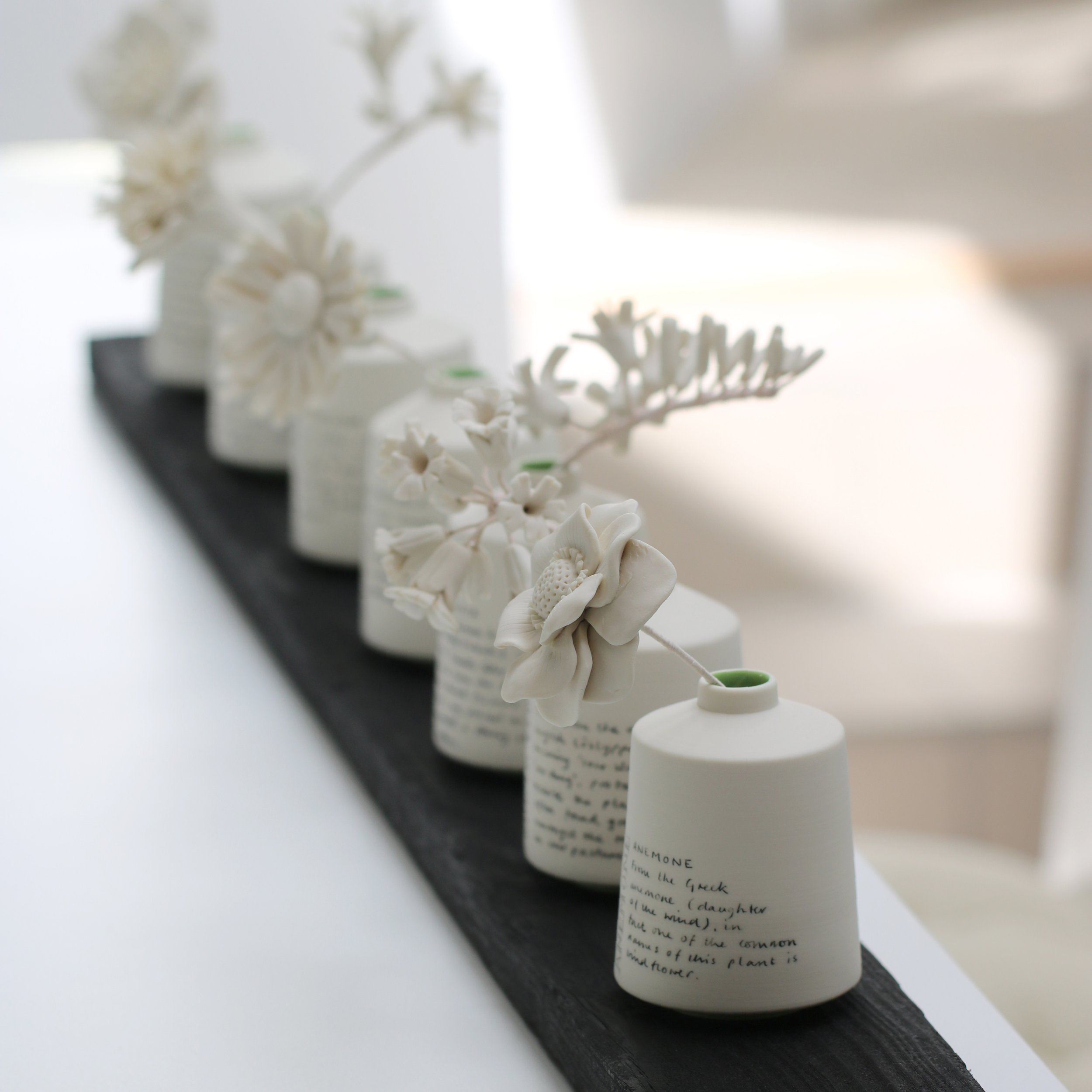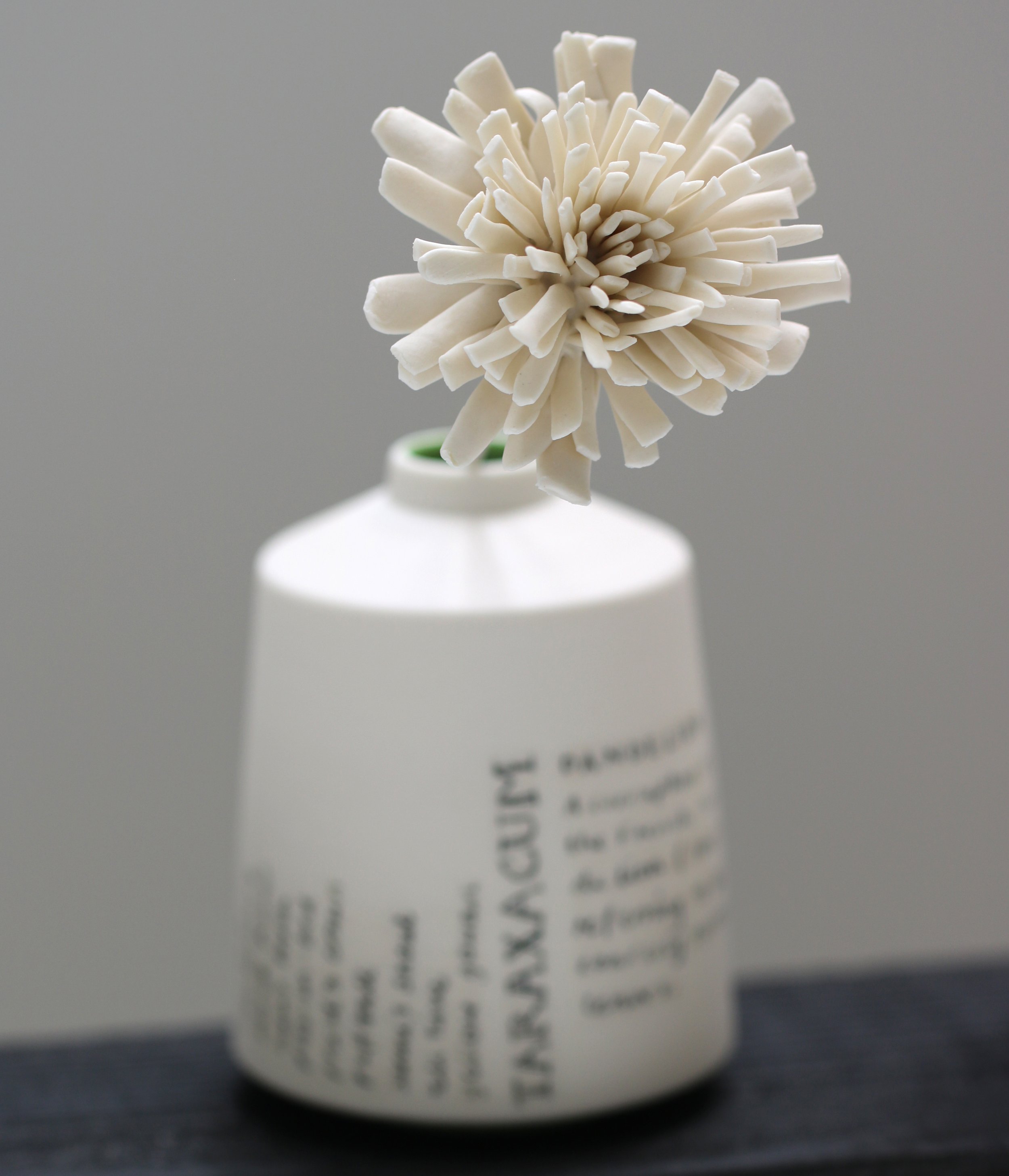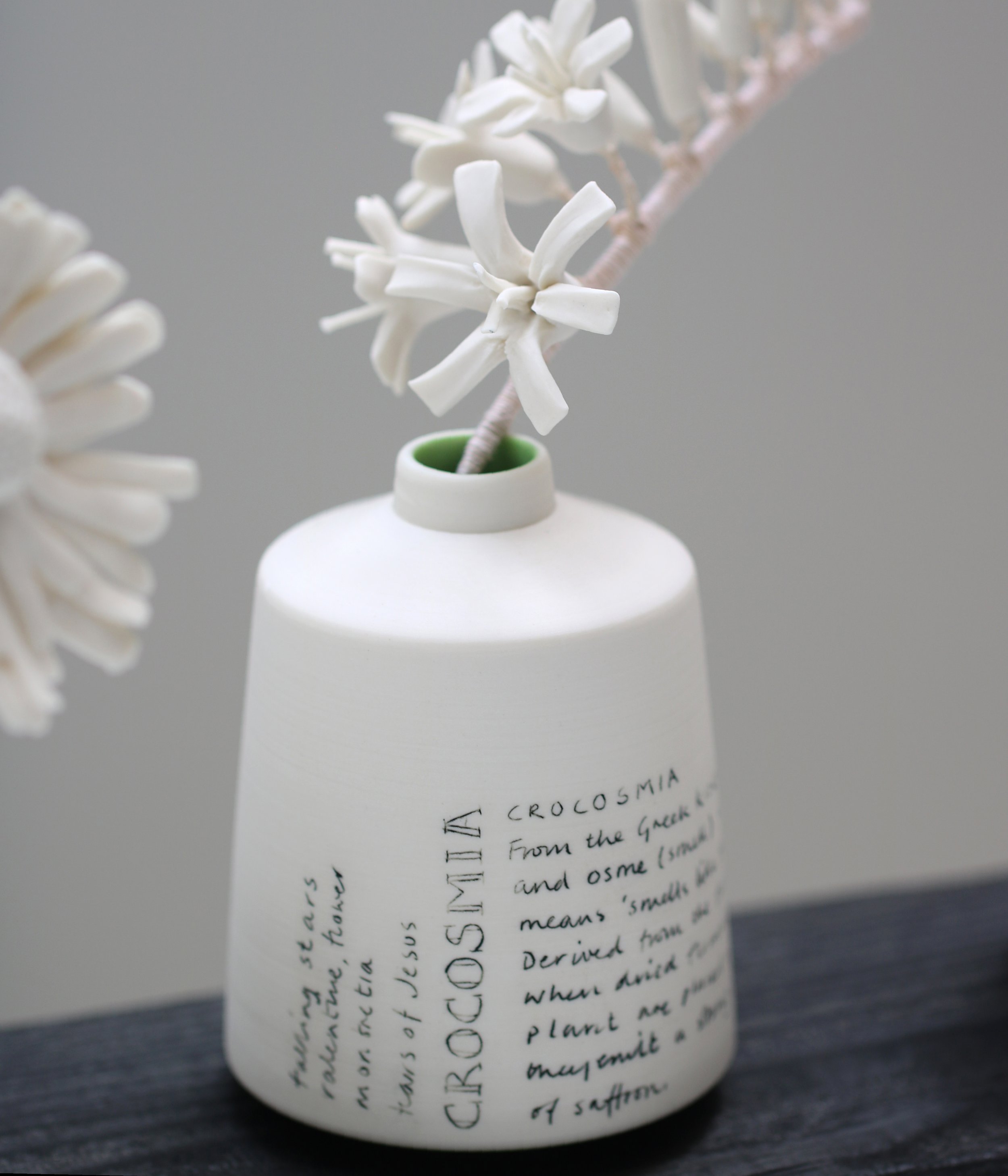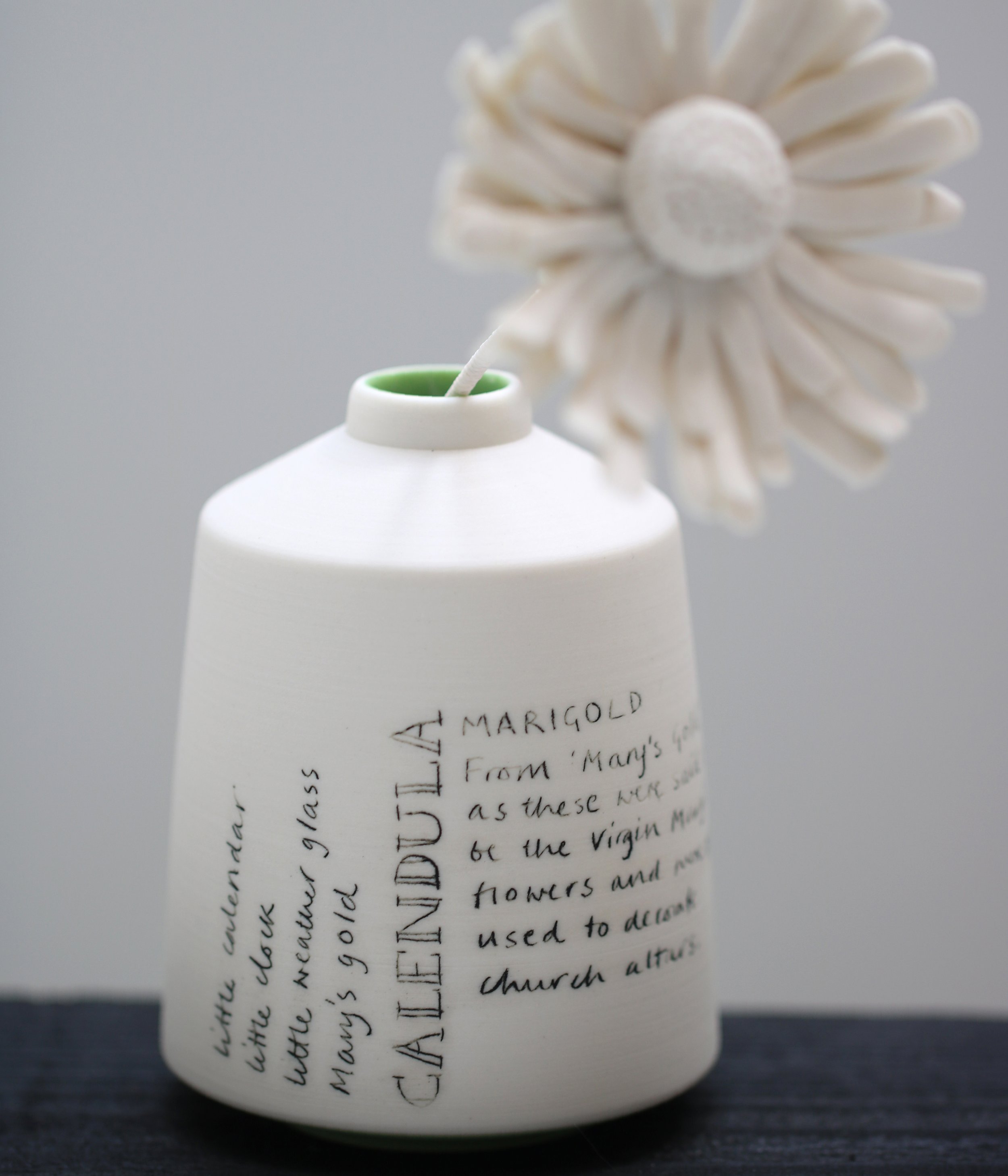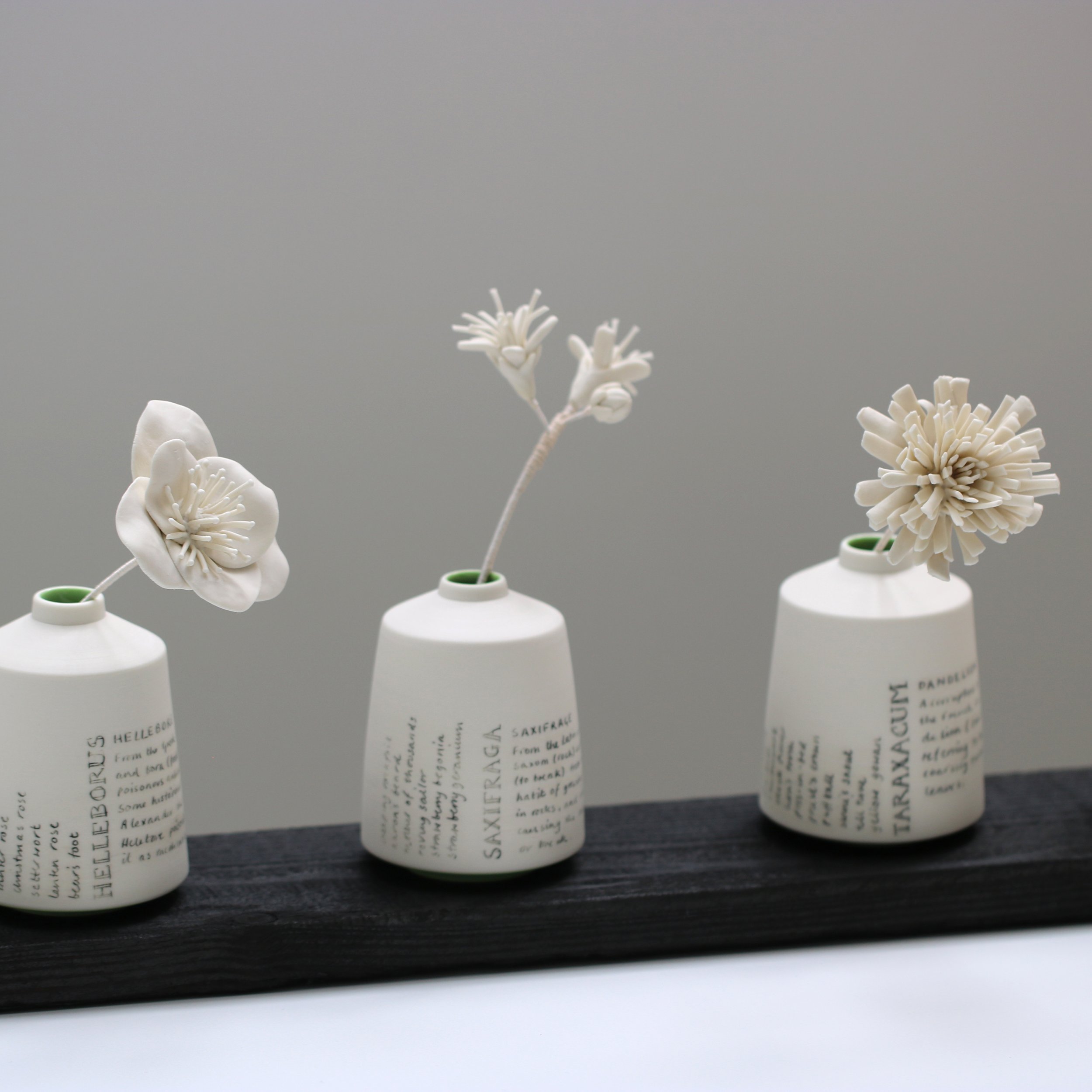Specimens for Discovery
POTFEST 2022 COMPETITION
THEME: ROOTED IN THE PAST, PLANTED IN THE PRESENT
Winner of Potfest Scotland: Potters’ Prize
Winner of Potfest in the Park: Potfest Prize
This collection of porcelain plant specimens were created to illustrate the etymology and variety of plant names. I grew up in a family of plant lovers. Through them I discovered the value of plants across the board – from rare cultivars, to herbs, wildflowers and weeds. The nature table at my primary school always included bottles filled with random hedgerow flowers labelled with their common names.
Most plants have two names:
Common name: This is simply the name that caught on in a certain area over time – this often varies from region to region, and differs across the world.
Scientific name: This corresponds to a precise, universal system of taxonomy developed by 18th century, Swedish botanist Carl Linnaeus.
Almost 270 years ago Linnaeus published Species Plantarum, a work that is recognised as the starting point of modern botanical nomenclature. It was the first work to consistently apply a formal system of naming species of all living things by giving each a name composed of two parts, both of which use Latin grammatical forms, although they can be based on words from other languages. The first part
of the name identifies the genus to which the species belongs, and the second part distinguishes the species within the genus.
For example:
Genus: Calendula
Species: C. officinalis
Binomial name: Calendula officinalis
Common name: Pot Marigold
Today you no longer have to trawl through books to find the name of a plant unknown to you. There are amazing ID apps for your mobile phone, such as Seek by iNaturalist, which identifies and gives information on your local flora and fauna by using your camera as you scan the ground in front of you.

